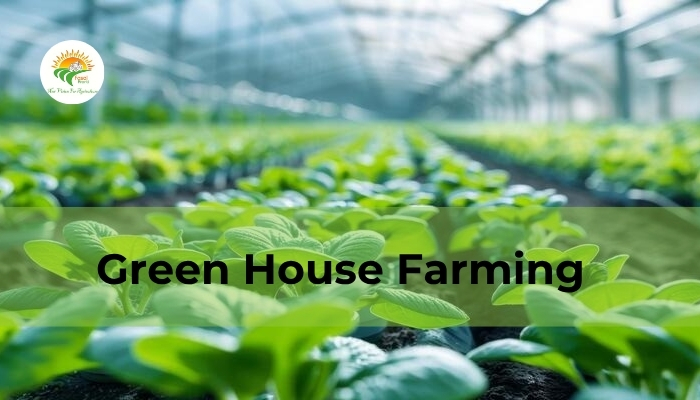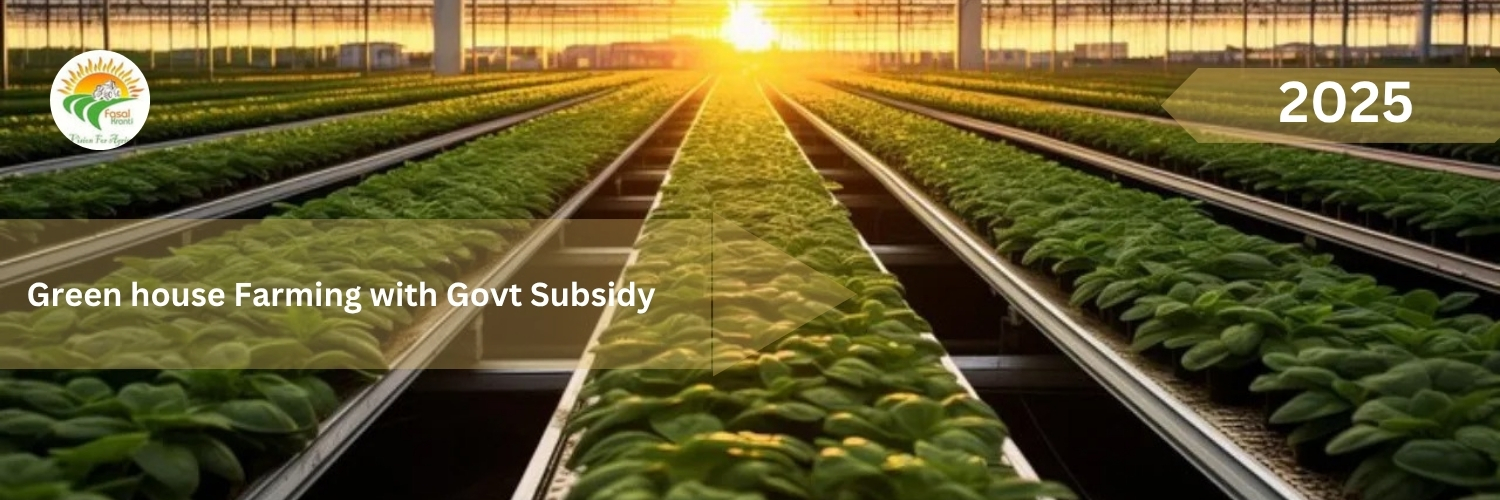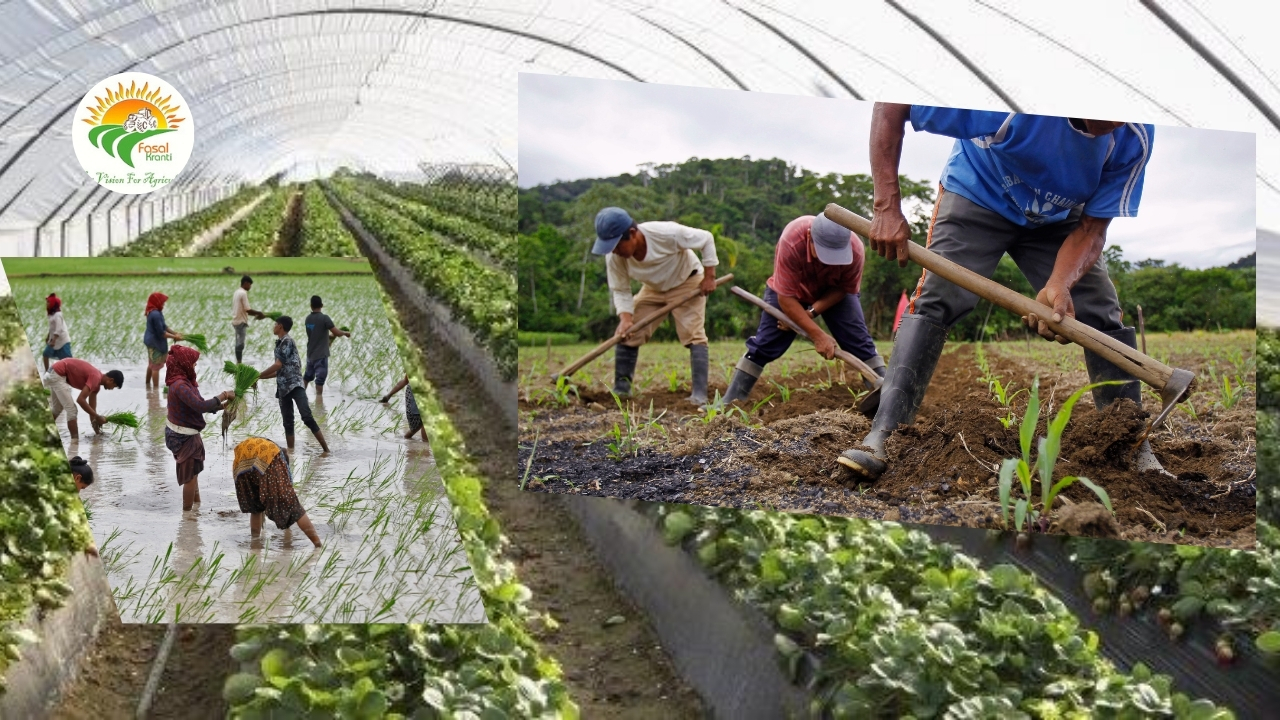Rainfall & Green house Farming: Maximizing Monsoon Impact

Strong 8k brings an ultra-HD IPTV experience to your living room and your pocket.
In India, monsoon season brings hope to every farming village. It fills our rivers, recharges our wells, and gives crops the water they need. But it also brings worries too much rain can wash away months of hard work. Crops may rot, fields can flood, and pests find perfect conditions to spread. This is where green house farming can truly help. With greenhouses, Indian farmers can control rain exposure, collect water for irrigation, and protect crops from diseases. This article explores how green house farming, combined with smart habits, can turn monsoon into a season of opportunity.
Understanding Monsoon and Its Impact in India
Monsoon in India arrives suddenly one day it’s hot and dry, the next day it’s raining heavily. These fast changes can confuse the crops. The high humidity increases the risk of fungal diseases, and soil often stays too wet, damaging plant roots. Many farms in states like Maharashtra, Karnataka, and Tamil Nadu face the challenge of muddy fields and lost crops. However, monsoon also reduces the need for groundwater or electric pump sets. If this free water is collected properly, it can save a lot of money and effort. Indian farmers must now learn how to manage rainfall, not just pray for it.
How Green house Farming Helps During Monsoon
Green house farming means growing crops inside a covered area made of plastic or glass. These structures are strong enough to handle heavy rains and can stop pests from entering. Farmers can control the air inside, reduce excess moisture, and keep plants safe from diseases. During monsoon in India, when outside fields are waterlogged, crops inside greenhouses remain safe. The roof stops extra rainwater, while drainage channels guide water away. Vents or fans help dry out the air inside, stopping fungus from growing. This way, even in the wettest months, farmers can grow healthy crops and earn more.
The Role of Farmer Habits in Green house Success
Having a green house is just the beginning. Its success depends on the farmer’s daily routine. One important habit is checking the greenhouse every morning. A quick round helps spot leaks, blocked drains, or weak plants. After every rain, it’s important to open vents or windows to let out the trapped humidity inside. Farmers who collect rainwater from the greenhouse roof and use it with drip irrigation also save water bills. Most importantly, talking to other farmers and sharing ideas helps improve farming methods. When one farmer succeeds, others get inspired and follow. That’s how green house farming grows village by village.
Building a Greenhouse That’s Ready for Indian Rain
In India’s monsoon-heavy regions, the greenhouse must be strong and rainproof. Use good-quality iron pipes for the frame and thick UV-resistant plastic sheets for the cover. The roof should be slightly slanted so that rainwater slides down easily. Build proper drainage channels around the greenhouse to carry water away. Inside, raised planting beds help stop water from settling near plant roots. For ventilation, small fans or manually controlled side windows work well. Many Indian farmers have already started adopting such structures, especially under government subsidy programs, and the results are promising.
Rainwater Collection and Usage
Rainwater is free don’t let it go to waste. In green house farming, the roof becomes your catchment area. Attach gutters to the edges of the roof to collect the water and direct it into tanks or drums. Once stored, this water can be used later with drip pipes to give each plant the right amount. In monsoon, when the soil already has moisture, drip irrigation prevents overwatering and keeps the roots healthy. In dry periods that follow the rains, this stored water becomes even more useful, especially in water-scarce states like Rajasthan or Telangana.
Choosing the Right Crops for Monsoon Green houses
Some crops do much better in greenhouses during the rainy season. Leafy vegetables like palak (spinach), methi (fenugreek), and coriander grow quickly and stay clean. Herbs like tulsi and mint also thrive and sell well in local markets. Vegetables like bhindi (okra) and beans grow fast and give good returns. In green house farming, you can plan your crop cycles better. After every harvest, you can rotate your crops to maintain soil health and avoid pests. Indian farmers who follow this method often report better yields and fewer losses even in heavy monsoon years.
Managing Pests and Diseases in the Rainy Season
Humidity during monsoon makes it easier for pests and fungi to attack crops. In greenhouses, farmers must stay alert. By checking plants daily for spots, bugs, or leaf curling, you can catch problems early. Opening vents, turning on fans, or using organic sprays like neem oil helps control diseases. You can also release friendly insects that eat harmful pests. These natural methods are cheap, safe, and better for health. Indian agricultural research centers are now training farmers on these low-cost pest control techniques, especially useful during the wet season.
Using Simple Technology to Make Life Easier
Technology doesn’t have to be expensive. Even small tools can help. Moisture meters show whether the soil is too dry or too wet. Small weather sensors can tell you the temperature and humidity inside the greenhouse. Timers connected to your irrigation system ensure that water is given at the right time. These tools are now available in many parts of India and are often subsidized. The key is to use them regularly and adjust your routine based on the data. Smart farming doesn’t mean complicated it means informed.
Saving Costs and Increasing Income in Green house Farming
One of the biggest advantages of green house farming in India is the savings it brings. During monsoon, when open-field farmers suffer from floods or crop loss, greenhouse farmers keep harvesting. They spend less on pesticides, use less water, and harvest more often. Also, greenhouse vegetables are usually cleaner and fetch better prices in mandis and retail shops. Many Indian farmers say that even a small greenhouse can double their income if managed well. With support from schemes like MIDH (Mission for Integrated Development of Horticulture), more farmers can now afford to build and maintain greenhouses.
A Farmer’s Story from India
Ramesh, a farmer in Maharashtra, set up a green house just before the 2024 monsoon. While nearby farms were underwater, Ramesh was harvesting spinach and tomatoes safely. He had set up rainwater tanks, installed a drip system, and checked his greenhouse every day. That season, his earnings doubled. Other farmers in his village saw this and started applying for subsidies to build their own. Ramesh’s story is just one of many across India that shows how smart planning and green house farming can change a farmer’s life.
How to Start Greenhouse Farming in India (2025)
If you're interested in green house farming, begin small. A 100-square-meter greenhouse is enough to grow greens or herbs. Visit your local Krishi Vigyan Kendra (KVK) or agricultural office. They will guide you on government schemes, subsidies, and technical training. Join local farmer WhatsApp groups or cooperatives to stay updated. It’s best to visit a successful greenhouse farm nearby and learn directly. Seeing results with your own eyes builds confidence. Once you start, you'll see how green house farming fits well with India’s changing climate.
Remark
In 2025, Indian agriculture is facing new challenges but also new tools. Monsoon doesn’t have to destroy crops anymore. With green house farming, every drop of rain can become your biggest strength. Build your structure strong, follow good habits, use simple tools, and keep learning. Farming is changing, and with a little planning, your harvests can keep growing even when the skies open up. Use the rain. Don’t fear it. Let green house farming guide you into a smarter, more secure future.
FAQs
Q1: What is green house farming?
Greenhouse farming uses covered structures to control the climate, protect crops from heavy rain, and allow year-round farming.
Q2: How does monsoon help greenhouse farming?
Monsoon rain collected from greenhouse roofs saves water costs, while inside, humidity can be managed to reduce disease.
Q3: What farmer habits support greenhouse success?
Daily inspection, adjusting ventilation, saving rainwater, and talking to fellow farmers all contribute to success.
Q4: Is green house farming affordable for small Indian farmers?
Yes, especially with subsidies and shared models. Many farmers start small and expand slowly.
Q5: Can machines replace farmer skills?
Technology helps, but farmers’ decisions like when to open vents or rotate crops are still essential.
Q6: How do I begin greenhouse farming in monsoon?
Get rain data, install water collection, build a strong frame, use simple tools, and take help from local experts.
Note: IndiBlogHub features both user-submitted and editorial content. We do not verify third-party contributions. Read our Disclaimer and Privacy Policyfor details.






